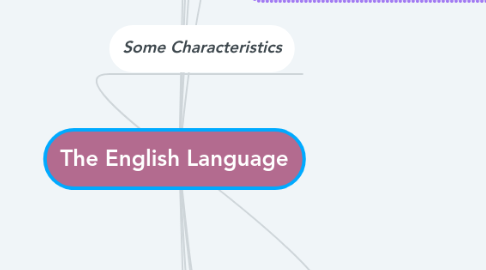The English Language
by CLAUDIA CESPEDES CASARIEGO

1. Some Characteristics
2. Approaches, Methods, Techniques
3. The Natural Approach
3.1. Students initially receive nothing but input from the teacher—they’re not asked to produce anything. Students may be asked to listen and repeat dialogues and conversations, but nothing more. Over time, students are asked to produce so long as they comfortable doing so—based on the target structures taught.
4. Holistic Approach
4.1. A holistic approach to language sees it as a whole, which is not divisible in a meaningful way for teaching. A holistic approach would focus on everything the learner needs to know to communicate effectively.
5. Communicative Approach
5.1. In this method, the focus is on authentic, meaningful communication, not structure. Students accomplish tasks using language. They do not study the language, as happened in the past.
6. Content and Language Integrated Learning (CLIL)
6.1. This method focuses on content more than language itself. In fact, language is seen as an enabler that allows students to use target structures within a given context.
7. Receptiveness
7.1. A significant feature of the English language is its receptiveness to accepting and adopting words from other languages. English has accepted and adopted words from Asian, European, African, Indian, Japanese, Chinese and other languages. Also, English has accepted words from classical languages like Latin, Greek, and Sanskrit.
8. Phrasal verbs
8.1. A phrasal verb is an idiomatic phrase consisting of a verb and another item, typically either an adverb, as in break down, or a preposition, for example, see to, or a combination of both, such as look down on. (An item is the word for small self-contained pieces of language which you can teach or practice in a lesson.) These phrasal verbs are a VERY significant feature of the English language and can cause severe difficulties for learners. Sentences such as I put it down to the weather, or I made it up with my sister, are usually nonsense to beginner non-native-English speakers. Unfortunately for the English language learner, phrasal verbs are extremely common in colloquial (informal, everyday, conversational) English language
9. Its simple inflection
9.1. Inflection is the name for the extra letters added to nouns, verbs and adjectives in their different grammatical forms, e.g., cat, cats; eat, eats; big, bigger. English is considered to be a weakly inflected language when compared to, say, French or Russian. Its nouns have only traces of inflection (plurals, the pronouns), and its regular verbs have only four forms, e.g., look, looks, looked, looking.
10. Fairly easy to learn
10.1. English is one of the easiest and simplest natural languages in the world. Of course, it's all relative. It depends on the learner's ability and previous language learning experiences Nevertheless, it's fair to say that English is a relatively easy language to learn, understand and speak when compared to very complex languages such as Arabic, Cantonese, Mandarin, Korean and Japanese.


